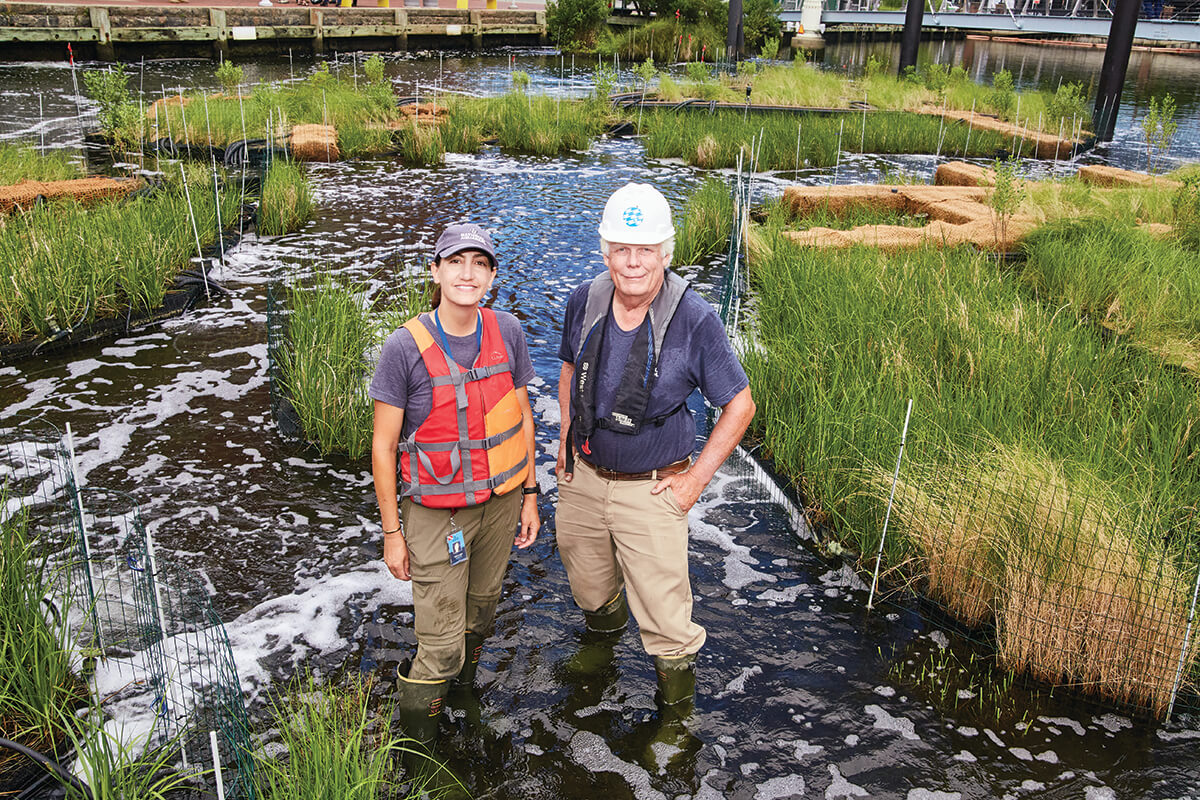News & Community
A Native, Floating Marshland is Alive on the Inner Harbor
The National Aquarium's new Harbor Wetland is a 10,000-square-foot recreation of what would have been found along Baltimore’s shoreline hundreds of years ago.

Standing in water so shallow, it looks like he’s walking on it, Jack Cover gazes just below the surface. Next to the nearby grasses, above the algae-clad deck at the soles of his rubber boots, there swims a school of young Atlantic silverside.
“Just look at that,” says Cover, the longtime general curator of the National Aquarium, noting that the tiny fish prefer ankle-deep water to avoid predators, like the Atlantic needlefish that he’s seen cruising lately, too. “It’s amazing—that’s what you see when you’re out on a real marsh. And here we are, in the Inner Harbor.”
Specifically, we’re in the Harbor Wetland, the Aquarium’s newest living exhibit, a 10,000-square-foot recreation of what would have been found along Baltimore’s shoreline hundreds of years ago. Floating between the Aquarium’s pedestrian bridges, spanning the Harbor’s Piers 3 and 4, it’s viewable to the public starting in August.
“Nature is here,” says Cover, and he wants you to see and learn about it, and maybe lower your blood pressure in the environs.
There’s the water, of course, like everywhere else in the harbor, but here it moves around grasses and sapling trees rather than abutting concrete. The low-lying plants grow from a recycled plastic base attached to pontoons, while air handlers move water to mimic tidal flow. Oyster reefs have been added, too.
It’s nature meets engineering, created to educate kids and other visitors, promote healthy water, and bring back native species—and it’s already working. When the vegetation was planted in mid-May, animals like crabs, eel, dragonflies, turtles, and more swam on in like they did in pre-industrial marsh.
“On day one, a mallard duck nested,” says Charmaine Dahlenburg, the Aquarium’s director of field conservation. “And the biggest shock of our life, two weeks in, were the sea otters.”
People won’t be allowed in the Harbor Wetland, to be clear, at least unsupervised. But the associated new dock overlooking it is open (and free) during the Aquarium’s business hours.
After four prototypes, it’s the first exhibit of its kind and size in the U.S. And it’s a marvel of aquatic design—the Aquarium has patents pending for the buoyancy technology.
“We hope to set the example of what you can do with a waterfront city, rather than just sweat on concrete, or watch trash float by,” says Cover.
The project is also a culmination of his life’s work. Originally from Hampden, the 67-year-old first found pleasure in nature as a kid during family vacations to Kent Island, eventually joining the Aquarium staff in 1987.
“I can’t tell you how excited and joyful I am walking through here,” he says. “I spent my youth going up little channels like this. They’re full of life.”